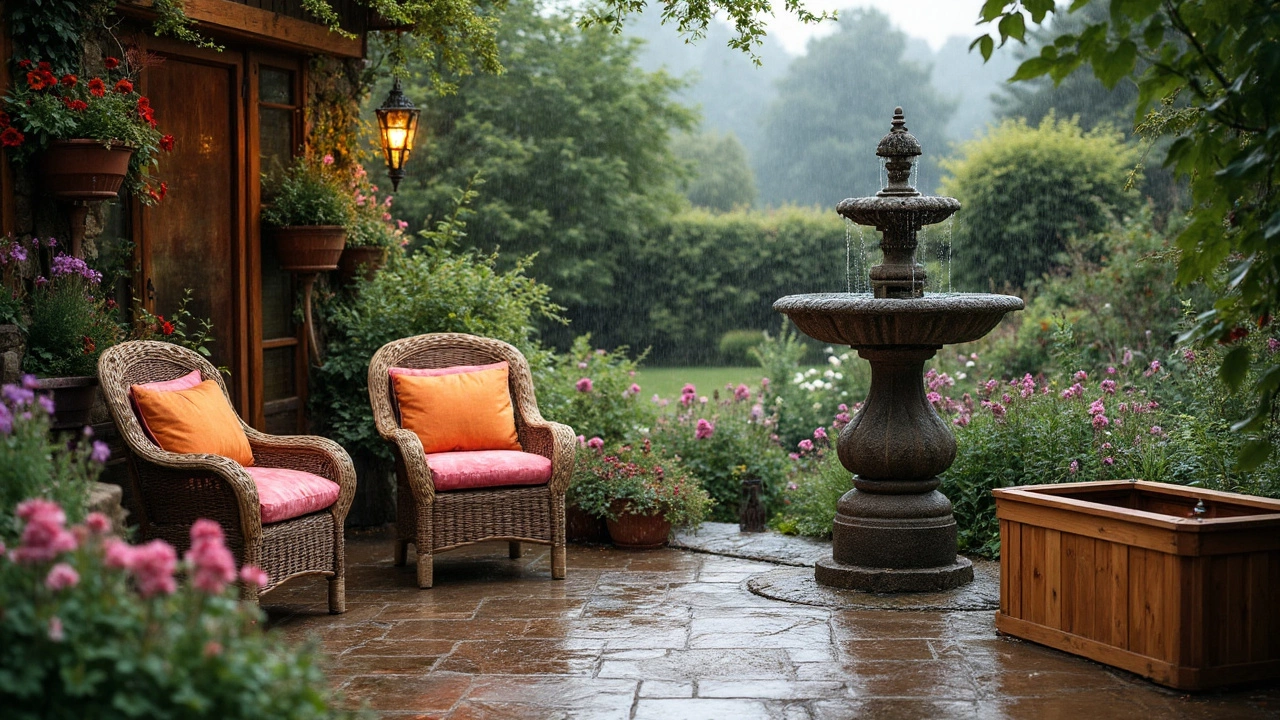Rain Storage Tips for Outdoor Furniture – Keep Your Pieces Safe
Got a beautiful patio set that’s getting soaked every time it rains? You’re not alone. A wet sofa or a drenched wooden table can turn into a costly repair job fast. The good news? A few simple steps can save you from rust, mould, and warped wood.
Why Protect Your Furniture From Rain
Rain does more than just get your cushions damp. Water seeps into joints, softens glue, and encourages mildew on fabrics. Metal frames start to rust, while untreated wood swells, cracks, and loses its colour. If you leave a chair out for a season, you might find it practically unusable when summer rolls around.
Even furniture made for the outdoors isn’t immune. Many pieces are designed to handle a splash, not constant exposure. Think of rain storage as a shortcut to longer life, less maintenance, and fewer trips to the hardware store.
Simple Rain Storage Solutions
1. Invest in a good cover. A breathable, waterproof cover is the easiest fix. Look for one that fits snugly and has tie‑downs or elastic hems so wind can’t lift it off. If you have a mixed set, individual covers work better than a blanket‑type shroud.
2. Use a patio umbrella or awning. A sturdy umbrella can shield a dining set while you’re still using it. Retractable awnings are perfect for larger areas – they pull back when the sun shines and close up when clouds roll in.
3. Store pieces in a shed or garage. When you have the space, this is the most reliable method. Stack chairs upright to save floor space, and keep cushions flat to avoid creasing.
4. Raise furniture off the ground. A simple wooden pallet or metal rack lets water drain away, preventing the base from sitting in puddles.
5. Apply a protective spray. For wood, a marine‑grade sealant repels water and UV rays. Metal frames benefit from rust‑inhibiting spray. Reapply every year for best results.
6. Use slatted or mesh storage bins. These keep items dry while allowing air circulation. They're especially handy for cushions that need to breathe.
7. Plan your layout. Position tables and chairs under eaves or against a wall when possible. Even a small overhang can cut down on direct rain exposure.
8. Quick‑dry after a storm. If you forget to cover something, wipe it down with a dry cloth as soon as the rain stops. Let it air out before putting cushions back on.
By combining a few of these tricks, you’ll notice a big difference in how your furniture looks year after year. The upfront effort is tiny compared to the cost of replacing a rusted frame or a mouldy sofa.
Remember, the key is consistency. A cover that’s left loose for a week can do more harm than good, and a spray that’s applied once and never touched again won’t protect much. Check your setup each season, make tiny adjustments, and you’ll keep your outdoor space ready for any weather.
Where to Stash Patio Cushions When It Rains
Wondering where to put your patio cushions when it rains? Keeping them dry is crucial to prolong their life. From waterproof storage solutions to handy tips on quick drying methods, you'll find everything you need to keep your outdoor cushions in top shape. Your garden furniture deserves care, and this guide will help you protect it effortlessly.
More
